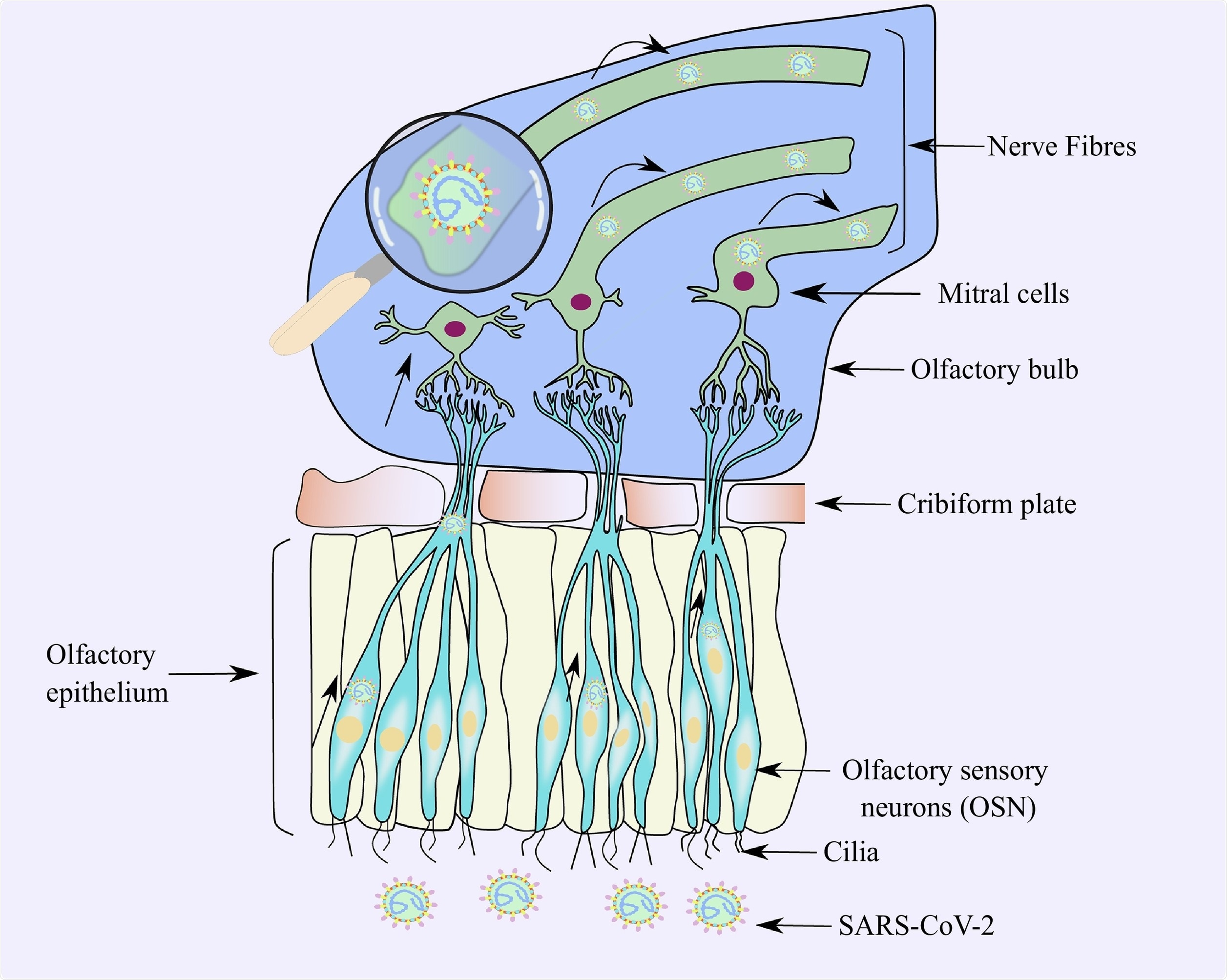The COVID-19 pandemic has led to over a million deaths across the globe. The causative agent of this disease is the novel coronavirus, SARS-CoV-2, which is a 29,903 base pair, positive-sense, single-stranded RNA virus of the Coronaviridae family.

Image Credit: https://www.sciencedirect.com/science/article/pii/S0024320520313217?via%3Dihub
The 4 main structural proteins of SARS-CoV-2 includes spike proteins (S), nucleocapsid proteins (N), membrane proteins (M), and envelope proteins (E). While the S protein facilitates viral attachment and membrane fusion, the N protein plays a role in the viral replication inside the host organism, the E protein helps form viroporins that are essential for viral assembly and release, and the M protein aids viral assembly and budding.
Does COVID-19 affect only the respiratory symptom?
During the initial stages of the pandemic, only the peripheral symptoms of the disease such as fever, cough, headache, respiratory difficulties, and so on were known to us.
However, over time, more and more studies are showing that neurological disorders like seizures, meningoencephalitis, viral encephalitis, Guillain-Barré syndrome, acute cerebrovascular disease, and respiratory failure are quite common in COVID-19 patients. This presents a significant problem in the management of patients with the disease.
Interestingly, current reports say that SARS-CoV-2 virions have managed to evade into the brain as well, one reason could be due to the distribution of ACE2 receptors in the brain.”
In the past, several studies have made efforts to understand the role of the nervous system in these complications and the results of these studies reveal that SARS-CoV-2 infiltrates into the CNS via multiple routes.
Reviewing findings from past studies that suggest CNS involvement of SARS-CoV-2
Recently, researchers from the Department of Pharmacology, Manipal College of Pharmaceutical Sciences, India, reviewed findings from several studies that suggested CNS involvement of SARS-CoV-2. Since it was evident that SARS-CoV-2 can infect the CNS and cause several complications, the researchers wanted to examine and map out all the pieces of evidence for SARS-CoV-2 entry into the CNS, the possible entry routes, the potential interaction of SARS-CoV-2 structural proteins, and the various neurological conditions that follow CNS infection.
Many of the studies claimed that the virus enters the CNS and comes into contact with ACE2 receptors of neuronal and glial cells through multiple routes such as the CSF, trigeminal nerve, olfactory nerve, neuronal dissemination, and hematogenous pathways.
Many other studies suggested that the structural proteins of SARS-CoV-2 play a crucial role in its infectivity, particularly the spike proteins that act as mediators of spike attachment and host membrane fusion.
The envelope, nucleocapsid, and membrane proteins make the proliferation of SARS-CoV-2 inside the host easier and this can lead to serious conditions such as Guillain-Barré syndrome, seizures, viral encephalitis, meningoencephalitis, and acute cerebrovascular disease.
Further research is crucial to better understand the CNS involvement of COVID-19
To summarize, studies show that the complications of SARS-CoV-2-led COVID-19 go beyond respiratory illness. There is clear evidence for the entry of the virus into the nervous system and the multiple routes through which SARS-CoV-2 can take over the CNS. The structural proteins of SARS-CoV-2 are crucial in enabling neuronal infectivity, which leads to several neurological disorders in patients with COVID-19.
Since the cerebrospinal fluid (CSF) is an excellent marker of CNS changes, CSF analysis could help detect the presence of SARS-CoV-2 in the CNS. Although studies have suggested a clear role of the nervous system in COVID-19 pathology, the complexity of neuronal networks presents a barrier to a better understanding of the impact of SARS-CoV-2 on the various neurological symptoms seen in COVID-19 patients.
According to the authors, not many studies currently focus on the CNS manifestations of SARS-CoV-2. Although some neurological findings have been reported in COVID-19 patients, the exact mechanism of infection of the CNS is still not clear, and further studies are necessary to draw more concrete conclusions about the effect of COVID-19 on the CNS.
The authors are “placing a magnifying lens” on the lesser-known CNS consequences of COVID-19 disease in an attempt to shift the focus onto the new threats which need to be further studied.
Even though certain findings have reported such conditions in COVID-19 patients, the exact mechanism of CNS infection remains speculative, and further study is necessary to draw concrete conclusions regarding COVID-19 and its effects on CNS.”
Journal reference:
-
Sairaj Satarker, Madhavan Nampoothiri, Involvement of the nervous system in COVID-19: The bell should toll in the brain, Life Sciences, Volume 262, 2020, 118568, ISSN 0024-3205, https://doi.org/10.1016/j.lfs.2020.118568.